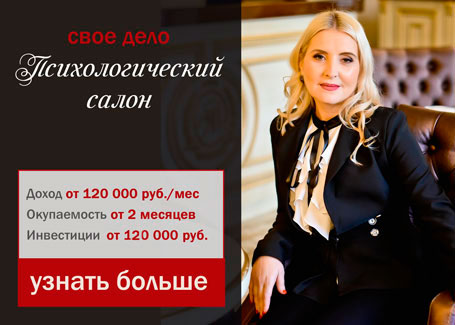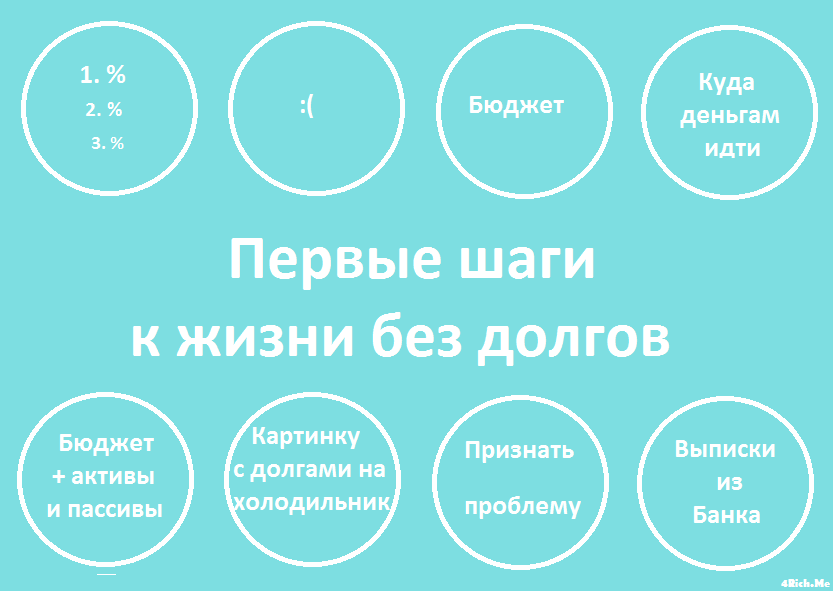Accounting courses of the simplified taxation system are a real gift for a small business. Specialists of the Moscow educational center Lubyanka will tell, show and teach representatives working in this economic niche how to reduce the costs of paying company taxes from 30-40 percent to 6-15 percent profit. Agree - the difference is huge!
Accounting courses on the simplified tax system (simplified tax system) in the center of Lubyanka work especially for you if you:
1. Beginner entrepreneur.
2. The head of a small, newly registered company or a company about to switch to a simplified taxation system;
3. Engaged in family business;
And also we are waiting for all those who want to learn how to independently conduct accounting and tax accounting on a simplified taxation system. After all, even if the ability to keep tax records using a simplified system is not useful today, it can be very useful in the future.
At the Simplified courses, having spent not so much training time, each of our students will thoroughly study the 26th chapter of the Tax Code of the Russian Federation. This is the main legal act regulating the tax system when choosing the simplified tax system.
Tutors USN courses - experienced accountants and auditors will help students find the only true professional answers to the following questions:
- What does the concept of simplified taxation system (STS) include?
- What taxes does the STS replace and which ones still have to be paid?
- How to correctly maintain a notebook of income and expenses of the main document when the company switches to a simplified tax system?
- What are the current rates, as well as the rules for calculating and paying taxes?
- What are the deadlines for reporting and paying taxes?
- What is the subject of taxation in the simplified tax system?
- How to switch to simplified system and how to refuse it?
- How to determine income and expenses?
- How to correctly add tax amounts?
- How, when and in what form to file a tax return?
Accounting simplification courses are a very good opportunity to learn how to optimize the costs of small businesses. The knowledge we give works! If you work in the format of a small or family business, come to Simplified courses.
Our advantages:
Convenient time for classes. By contacting our manager on the phones indicated on the site, you can choose a convenient time for attending classes. It can be morning or evening, weekdays or weekends.
1.1. Exemption of organizations from payment of certain taxes when applying their simplified tax system.
1.2. Taxes and insurance premiums paid by organizations applying the simplified tax system.
2. Taxpayers-organizations.
2.1. The emergence of the right to transition to the simplified tax system.
2.2. Order and conditions of transition to the simplified tax system.
3. The choice of the object of taxation.
3.1. Object of taxation "income".
3.2. Object of taxation “income reduced by the amount of expenses”.
4. The procedure for determining income in the simplified tax system.
4.1. Revenues from sales.
4.2 non-operating income.
4.3. Receipts of funds not included in income.
5. The procedure for determining costs in the simplified tax system.
5.1. Costs taken into account when forming the tax base.
5.2. Features of cost accounting for the acquisition (construction, manufacturing) of fixed assets at the simplified tax system.
6. The procedure for the recognition of income and expenses under the simplified tax system.
6.1. The concept of "cash method" and its difference from the "accrual method".
6.2. Features of the recognition of certain types of expenses in the simplified tax system.
7. The tax period.
7.1. The tax period for the payment of tax.
7.2. Reporting periods for advance tax payments.
8. Tax rates.
8.1. When the object of taxation is “income”.
8.2. When the object of taxation is “income reduced by the amount of expenses”.
9. The procedure for calculating and paying tax, advance payment of tax.
9.1.Calculation of the amount of advance payment.
9.2.Calculation of the amount of tax.
9.3. Minimum tax.
9.4. Terms for advance payments and tax.
10. Tax return.
10.1. Form and filling procedure.
10.2. Term for submitting a tax return to the tax authority at the place of registration.
11. Tax accounting.
11.1. “Book of accounting of income and expenses of organizations and individual entrepreneurs applying the simplified tax system” (Book).
11.2. Procedure for filling out the Book. The practical task.
12. Features of calculating the tax base in the transition from the general taxation regime to the simplified tax system and from the simplified tax system to the general taxation regime.
13. Patent system of taxation, chapter 26.5 of the Tax Code.
14. Accounting for wages, personal income tax, insurance premiums. (4 parts)
14.1. Payroll. Calculation of vacation pay for employees.
14.2. Charge of sick leave.
14.3. Accrual of personal income tax. 8.9. Tax deductions.
14.4. Accrual of fear of contributions to the PFR, FSS, FFOMS.
14.5. Transfer of taxes and fees. Reporting
OUR METHOD
- Theory and practice in 1C - SIMULTANEOUSLY
- Practice in the program 1C 8 on the example of a real company from the first lesson
- Advanced practice with company documents from 0 to balance
- Ready-made lecture notes - more time to practice
| Volume hours |
Weekdays | Weekends | Basic price |
Discount price | Price for legal entities | Individual. training |
Sign up per course |
||||
|---|---|---|---|---|---|---|---|---|---|---|---|
| Morning 10 00 -14 05 |
Day 14 10 -18 15 |
Evening 18 30 -21 35 |
Morning 10 00 -14 05 |
Day 14 10 -18 15 |
Evening 18 30 -21 35 |
||||||
| 60 | 05.09-10.10*
tue-thu 14:00-18:05 |
20 168 | 15 950 | 17 545 | |||||||
This course can be completed in 3 formats:
1. - training scheduled in our .
2. - training scheduled from any place where there is internet.
3. - training anytime and from any place where there is internet.
Course volume - 60 academic hours
of which: classroom - 52 academic hours, for independent practical work - 8 academic hours

For admission you need:- Diploma (Higher education or special secondary)
*Attention! If you have a diploma in a foreign language, in accordance with 273 of the Federal Law "On Education", art. 107, translation of the diploma into Russian is required.
-Passport
At the end of the course you will receive:- Certificate of professional development
COURSE PROGRAM
1. Basics of accounting + work in the program 1C 8.3 Regulatory accounting
- Account system and double entry. Work plan of accounts at the simplified tax system
- The structure of active and passive accounts. The concept of subaccount. Examples and problem solving
- Reflection of operations on the formation of the authorized capital according to the constituent documents (for organizations)
- The composition of the constituent documents of IP
- Setting the initial program parameters for the simplified tax system
- Entering primary data on the company and individual entrepreneurs
- Setting up accounting policies, entering directories
- Chart of accounts and its editing
- Comparative analysis and composition of taxes under various taxation systems of OCH and STS
- Use of the right to transition to a simplified tax system
- Organizations eligible for transition. Transition Terms
- Organizations not eligible for transition
- The procedure for determining income
- The procedure for determining costs
- The procedure for working with cash. Cash discipline
- Accounting for cash transactions. Account 50 operations
- Registration of cash documents (receipt, expenditure cash warrants, cash book)
- Accounting of operations on the settlement account, account 51
- Withdrawal from a current account
- The procedure for receiving cash at the bank, the procedure for delivering cash to the bank
- The procedure for accounting for settlements with accountable persons, account 71
- Formation of credit and debit cash orders, cash book on company operations related to cash
- Work with a bank statement, processing a bank statement
- Formation of payment orders
- Preparation of an advance report based on primary documents in 1C
- Accounting for personnel. The procedure for hiring employees
- Account Structure 70
- Payroll preparation. Features of the reflection of salary costs in the simplified tax system. Payment of wages.
- Personal income tax. Standard tax deductions. Chapter 23 of the Tax Code
- The procedure and deadlines for the payment of personal income tax
- Report on personal income tax
- Dismissal of an employee. Compensation for unused vacation
- Calculation of average earnings for vacation pay, compensation for unused vacation
- Formation of personnel documents (orders, statements, personal cards, labor contracts, staffing, note-calculation ...)
- Payroll and personal income tax
- Reflection in the book of income and expenses
- Federal Law 212-ФЗ on the procedure for calculating and paying insurance premiums
- Synthetic account 69. Tax base. Non-taxable payments
- Accounting for premiums in the FIU. Reporting RSV-1
- Calculation of insurance premiums in the FIU for individual entrepreneurs
- Accounting for insurance premiums in the FSS. Reporting 4-FSS
- Compulsory social insurance against industrial accidents and occupational diseases
- Assessment of premiums
- Calculation of insurance premiums in the FSS, PFR. Filling in guides on contributions in program 1 C
- Formation of payment orders for the payment of contributions to the budget, bank statements
- A detailed analysis of the registers, balance sheet. Filling regulated reporting to funds (RSV-1, 4-FSS, personal income tax)
- Accounting for settlements with customers. Synthetic Accounts 62.1, 62.2
- Accounting for settlements with suppliers. Synthetic Accounts 60.1, 60.2
- Features of the contract of sale, shipment of goods, purchase of goods
- Formation of an act of reconciliation with counterparties
- Entering into the 1C program invoices for the shipment of goods, the formation of invoices for payment
- Reconciliation of settlements, features of offsetting advances from buyers, analysis of accounts 60, 62
- The concept of inventory. Valuation in accounting and tax accounting. Write-off methods
- Accounting for materials. Synthetic account 10. Receipt and issue of materials. The procedure for reflecting the costs of materials at the simplified tax system
- Features of the accounting of goods. Synthetic account 41. Receipt of goods, sale of goods. Features of the reflection of the costs of goods in the simplified tax system
- The concept of fixed assets, intangible assets, valuation of fixed assets, the formation of the initial cost
- Receipt of fixed assets. Documenting
- Depreciation of fixed assets. Retirement of fixed assets
- Features of the reflection of costs for OS in the simplified tax system
- The receipt (posting) of stationery, the movement (transfer to production) of materials. Analysis of material ledger registers
- Entering the range of goods, goods receipt, shipment of goods, commodity accounting, analysis of registers for accounting of goods
- Receipt of fixed assets, commissioning, formation of an act of acceptance-transfer of OS-1
- Accrual of depreciation by regulatory documents in program 1 C, disposal of fixed assets
- The book of accounting of income and expenses of reflection of economic transactions in it at the simplified tax system - 6% and the simplified tax system - 15%
- Tax rates (6% and 15%)
- Carrying forward losses. Down payment calculation
- Calculation of the minimum tax
- The formation of the book of income and expenses
- Filling a single tax return
- Composition of financial statements for USN payers (for organizations and individual entrepreneurs)
- Calculation of financial result
- Calculation and distribution of dividends. (for organizations)
- Analysis of the financial condition of the enterprise and individual entrepreneurs
- Formation of the balance sheet and report on financial results (for organizations)
Accounting courses from scratch
Accounting courses of the simplified tax system are in great demand among our students. Since USS courses allow you to fully master the knowledge and skills required by employers. Courses for accountants for IPs in USN will teach you how to introduce a tax regime with a special procedure for calculating taxes. And the learning of the basic 1 C takes place on real examples and documents. Having passed the courses of the simplified taxation system from scratch you will work out complete and detailed practical examples from the life of companies, our courses will fully reflect the modern realities of the work of an accountant.
At the end of the course, you will learn how to independently bookkeeping under the simplified taxation system. You will work on numerous examples in the program 1s usn work with documents. You will learn how to prepare reports and calculate taxes according to a simplified taxation system. All these skills will allow you to increase your professional status, and accordingly, there will be an opportunity for career growth. We can say that you will undergo an internship with your studies. So the amount of practice in the courses "Fleece" significantly exceeds the theoretical blocks.
What are the benefits of learning usn 1C

All our teachers are experienced accountants.
The training of the simplified tax system takes place according to a unique developed methodology, which was developed by accountants with extensive practical experience. This is what made it possible to create a 100% working training system.

Practical examples from the first lesson
The peculiarity of our courses lies in the fact that from the very first lesson, the training in basic training will take place exclusively on real and modern examples from the “life of companies”. You will have the opportunity to do all the key operations yourself on these documents. You will go from zero to balance.

At the exit - a specialist ready to work
The entire program of the course is designed so that all the material is easily mastered by the listener. Our many graduates in their reviews very often note that the training material was unexpectedly easily and easily presented. And indeed it is. We have done a great job and filled the courses with 1 practical tasks as much as possible so that each of our students can go through their first “internship”.
1 week (16 academic hours)
1. Special tax regime in the form of a simplified taxation system (STS), chapter 26.2 of the Tax Code.
2. Taxpayers-organizations.
3. The choice of the object of taxation.
4. The procedure for determining income in the simplified tax system.
5. The procedure for determining costs in the simplified tax system.
6. The procedure for the recognition of income and expenses under the simplified tax system.
7. The tax period.
8. Tax rates.
9. The procedure for calculating and paying tax, advance payment of tax.
10. Tax return.
11. Tax accounting.
12. Features of calculating the tax base in the transition from the general taxation regime to the simplified tax system and from the simplified tax system to the general taxation regime.
13. Patent system of taxation, chapter 26.5 of the Tax Code.
14. Accounting for wages, personal income tax, insurance premiums. (4 parts)
Offset.
Our phone: +7(495)
The Training Center invites people engaged in activities in the field of small business to courses on the simplified tax system. If you are a private entrepreneur, then your company may meet the necessary conditions for deciding on the transition to a simplified tax system. This is a limitation of the average number of employees for a tax period, not exceeding the maximum amount of income from sales for the same period and some other conditions. The decision to switch to a simplified taxation system is made voluntarily and allows for a return to the previous tax payment scheme. The specified system was adopted with the aim of reducing the tax press on small businesses, it simplifies the maintenance of accounting and tax accounting. If you want to switch to such a system, then courses on a simplified taxation system will be of great help to you, since in this case there will be no need to hire a third-party accountant. Classes at the Training Center in just a week and a half will teach you, or someone close to you, who will be engaged in accounting at your company, all the rules of reporting and the intricacies of this system, starting with whether to decide whether to switch to a simplified tax system or not.
Small businesses play a very large role in the successful functioning of a market economy. Such enterprises are quite numerous, since they do not require large financial investments at the initial stage. They provide jobs to a large number of the population, which contributes significantly to reducing unemployment and social stress. Small business is very dynamic, has the ability to quickly adapt to changing requirements from consumers.
This creates a rather tangible competition to large monopolies, not allowing them to completely capture the market and dictate their conditions. Foreign experience directly indicates the beneficial effect of small business on the general condition and stability of the state economy.
STS Accounting Accounting Training
However, without state support, the development of small businesses is impossible. At the same time, direct investment in small businesses by official structures seems to be ineffective. One of the solutions designed to support small businesses was the adoption of a simplified tax system. The transition of the enterprise to this system involves replacing the payment of many taxes and fees to federal, regional and local authorities with a single tax, which is calculated according to the financial results of the company’s work for the reporting period.
The Training Center invites all entrepreneurs interested in mastering the principles of the simplified tax system and self-management of accounting and tax accounting to courses on the study of a new method of paying taxes. Classes are held in a warm, friendly atmosphere, in a cozy atmosphere of bright classes. Teachers with extensive practical experience in the field of accounting will acquaint you with all the features of this taxation scheme, starting with legislative acts and ending with filling out reporting documents and the timing of their submission to the tax office. Modern techniques and an individual approach to each listener guarantee high-quality assimilation of the material. You will receive answers to all questions without exception regarding taxation of your company. The schedule is designed in such a way that each student has the opportunity to choose a convenient time for visiting the Training Center in order to master a new type of reporting on the job. Groups are engaged in the morning, afternoon and evening hours, weekend groups are also organized.
Accounting courses with a simplified taxation system (USNO) will be useful to all accountants who deepen their knowledge in the professional field of activity. Usn courses involve a detailed study of the simplified tax system, the study of all its key points.
Courses of simplified accountants are conducted under the guidance of an experienced and highly qualified teaching staff, which has been applying its knowledge in practice for many years, and is teaching its students more and more new students. Simplification training takes the form of a dialogue between students and the teacher.
Simplified courses are designed primarily for the result, so the study of a new topic begins only after all students have learned the previous lesson well. The training program was developed by experts and is aimed at ensuring that each student makes the most of it and knows in detail what the simplified taxation system represents.
Accountants courses are held in one of the largest educational centers in Moscow. Accounting courses in our training center are not only useful, but also comfortable spending time in convenient classrooms and in a friendly atmosphere.
At the end of the course, the courses are issued to graduates with a document, which is confirmed by their professional level of training and a good knowledge base. With the availability of such a document, the chances of obtaining a prestigious and sought-after job in large companies become as high as possible. Do not waste time in vain and sign up for courses of accountants in our training center in Moscow. Accounting courses with a simplified taxation system (USNO) are guaranteed to give you a modern and professional education in the shortest possible time.
The program of accounting courses with a simplified taxation system includes the following topics:
1. Special tax regime in the form of a simplified taxation system (STS), chapter 26.2 of the Tax Code.
1.1. Exemption of organizations from payment of certain taxes when applying their simplified tax system.
1.2. Taxes and insurance premiums paid by organizations applying the simplified tax system.
2. Taxpayers-organizations.
2.1. The emergence of the right to transition to the simplified tax system.
2.2. Order and conditions of transition to the simplified tax system.
3. The choice of the object of taxation.
3.1. Object of taxation "income".
3.2. Object of taxation “income reduced by the amount of expenses”.
4. The procedure for determining income in the simplified tax system.
4.1. Revenues from sales.
4.2 non-operating income.
4.3. Receipts of funds not included in income.
5. The procedure for determining costs in the simplified tax system.
5.1. Costs taken into account when forming the tax base.
5.2. Features of cost accounting for the acquisition (construction, manufacturing) of fixed assets at the simplified tax system.
6. The procedure for the recognition of income and expenses under the simplified tax system.
6.1. The concept of "cash method" and its difference from the "accrual method".
6.2. Features of the recognition of certain types of expenses in the simplified tax system.
7. The tax period.
7.1. The tax period for the payment of tax.
7.2. Reporting periods for advance tax payments.
8. Tax rates.
8.1. When the object of taxation is “income”.
8.2. When the object of taxation is “income reduced by the amount of expenses”.
9. The procedure for calculating and paying tax, advance payment of tax.
9.1.Calculation of the amount of advance payment.
9.2.Calculation of the amount of tax.
9.3. Minimum tax.
9.4. Terms for advance payments and tax.











How to get rid of debts - the debtor’s actions to exit the financial hole
Accounting for small businesses in the Czech Republic
How is accounting organized in the Czech Republic?
Signs for money: find on the street, lose a wallet with money, a new wallet
Examples of financial models